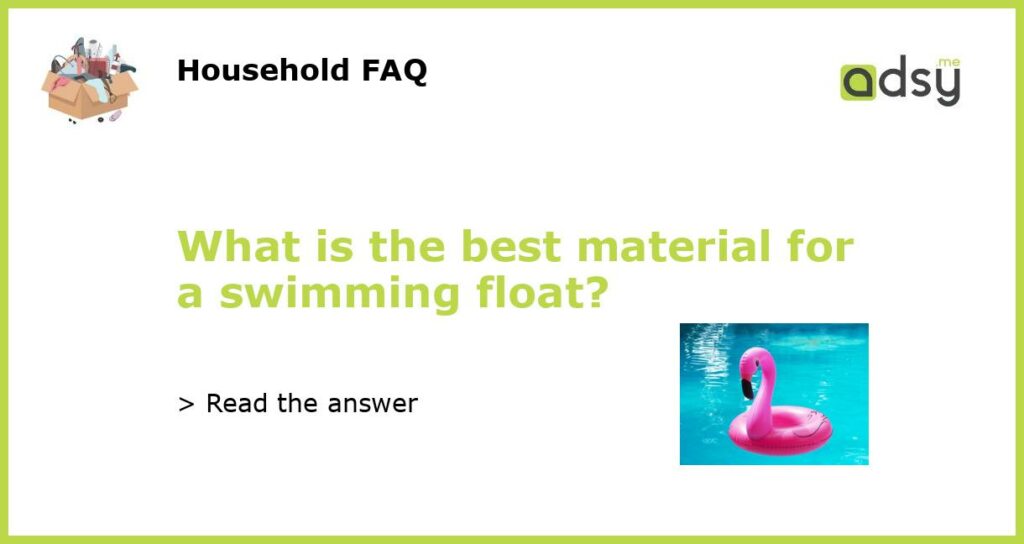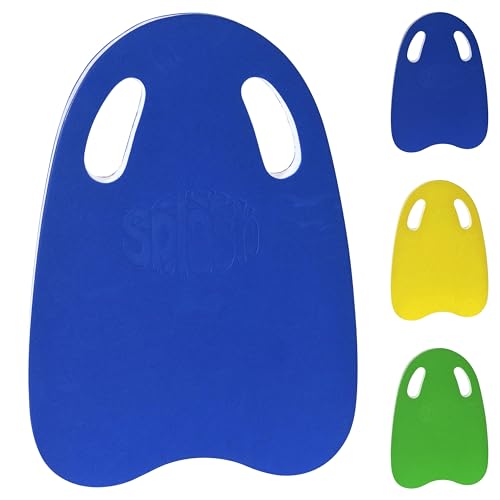The Search for the Best Material for a Swimming Float
An Overview on the Importance of Choosing the Right Material for Your Swimming Float
When it comes to swimming, safety should always be a top priority. Whether you are a seasoned swimmer or a beginner, using a swimming float can help you stay afloat and provide an extra level of security. However, with so many different types of swimming floats available, it can be challenging to know which one to choose. One of the most critical factors to consider is the material the float is made from.
The Pros and Cons of Different Swimming Float Materials
There are several materials commonly used to make swimming floats, each with its advantages and disadvantages. Some of the most popular include:
Foam Floats
Foam floats are among the most affordable and readily available swimming floats on the market. They are lightweight, making them easy to transport from place to place. However, foam floats can lose their buoyancy over time, and they may not be as durable as other types of swimming floats.
Inflatable Floats
Inflatable floats are another common option. They are highly portable, as they can easily be deflated and stored away between uses. Additionally, inflatable floats are typically very buoyant and can support a weight of up to several hundred pounds. However, they can be punctured or ripped if not handled properly, and they may not be as comfortable as other types of swimming floats.
Neoprene Floats
Neoprene floats are typically more expensive than foam or inflatable floats, but they are also more durable and long-lasting. They are often used by competitive swimmers as they provide excellent buoyancy without restricting movement. Unfortunately, neoprene floats can be heavy, and they may not be as comfortable for extended periods of use.
Factors to Consider When Choosing a Swimming Float Material
When deciding which type of swimming float material to use, there are several factors to consider:
Buoyancy
The primary function of a swimming float is to keep you afloat. Therefore, you must choose a float material that provides adequate buoyancy for your needs.
Comfort
A swimming float that is uncomfortable or chafes can quickly become distracting and detract from your overall swimming experience.
Durability
If you plan to use your swimming float frequently, you want to choose a material that is durable and long-lasting, and can withstand the wear and tear of regular use.
Price
Finally, cost is also a crucial factor to consider. While it is essential to choose a swimming float that meets your needs, you also want to find one that fits within your budget.
Finding the Best Material for Your Swimming Float
In conclusion, choosing the right material for your swimming float is a critical decision that can impact your swimming experience greatly. By considering the pros and cons of various materials and weighing the factors that are most important to you, you can find a swimming float that meets your needs and provides the level of buoyancy, comfort, durability, and affordability that you desire. Remember, whether you opt for foam, inflatable, or neoprene, the most important thing is to choose a swimming float that you feel comfortable using and that allows you to swim safely and confidently.






